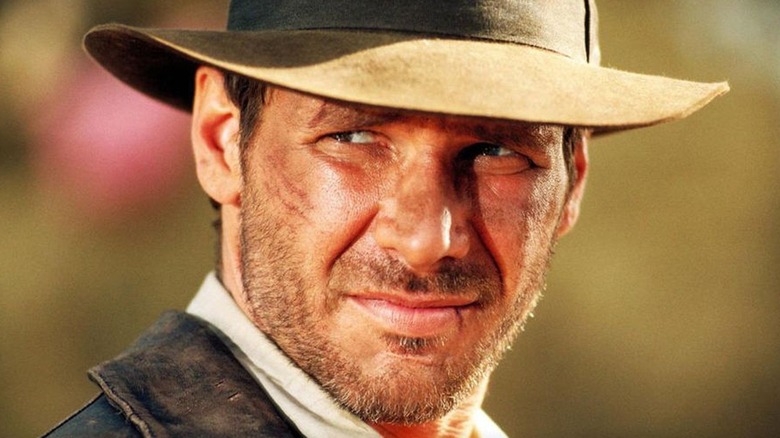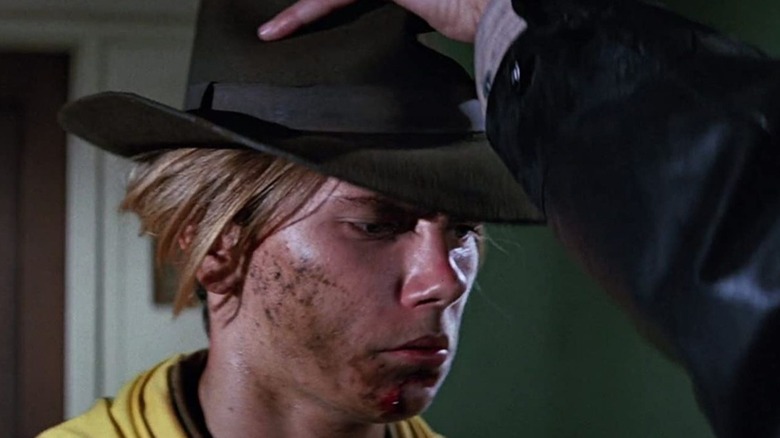The Real Reason Indiana Jones Wears A Fedora
A byproduct of the collaborative efforts of Steven Spielberg and George Lucas, "Raiders of the Lost Ark" hit theaters in 1981. Though it wasn't by any means the most highly anticipated feature of that year, it blew audiences away to the tune of a near $390 million gross by the time it left the big screen. Though the search for the Ark of the Covenant and the battles between good and evil that ensued over it gripped viewers young and old alike, "Raiders" wouldn't have become the franchise-spawner that it was without the inclusion of Dr. Henry Jones Jr. (Harrison Ford), better known as Indiana Jones.
Though he spends much of his time teaching at the fictional Marshall College, Jones' exploits as an archaeologist are what moviegoers are truly enthralled by. Whether he's outsmarting Nazis using the Holy Grail or recovering the sacred Sankara stones, he always provides a one-of-a-kind adventure. Even still, "Indiana Jones" flicks aren't without their constants, including recurring characters like Marion Ravenwood (Karen Allen) and Marcus Brody (the late Denholm Elliott) and even Jones' outfit itself. Indy's wardrobe isn't complete without his leather jacket, trademark whip, and, of course, his classic fedora.
Speaking of, the iconic piece of headwear isn't merely an aesthetic choice. There's a much deeper reason for Indiana Jones' decision to never leave his fedora out of his daily outfit.
Indy's fedora signifies a turning point in his life
At the beginning of 1989's "Indiana Jones and the Last Crusade," viewers are treated to a flashback of Henry Jones (River Phoenix) at only 13 years old. During a trip to Arches National Park in Utah with his Boy Scout troop, he spots a group of treasure hunters who have recently uncovered the coveted Cross of Coronado and plan to bring it back to their client. Hoping to turn the artifact over to the proper authorities instead, i.e. a museum, he snatches it from them and runs off.
After a brief chase, Jones evades their custody, but the local sheriff arrives at his home and forces him to turn it over to the robbers' boss, Panama Hat (Paul Maxwell). Disappointed in himself over the loss of the golden crucifix, Jones is consoled and revered for his bravery by one of the men — identified as Garth in the junior novelization of "Last Crusade," but is commonly known as "Fedora" (Richard Young). He then gifts the boy his hat and departs, telling him, "You lost today, kid, but that doesn't mean you have to like it."
He did indeed lose on that fateful day in 1912, and he was going to make sure that he never did again. Thus, Indiana Jones was born out of Garth's parting words and the exchange of his fedora, which Indy continued to wear for years to come. To him, it serves as a reminder of where his drive to keep the world's physical history out of the hands of evil came from, and the bitter taste of defeat that would return if he ever failed again.

